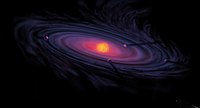
Beryllium cycling through deciduous trees and implications for meteoric 10Be systematics
Sign Up to like & getrecommendations! Published in 2021 at "Chemical Geology"
DOI: 10.1016/j.chemgeo.2021.120174
Abstract: Abstract Application of meteoric 10Be inventories and 10Be/9Be ratios to determine surface ages, erosion rates, and denudation rates requires understanding the conditions under which meteoric 10Be functions as an open vs. closed system near the… read more here.
Keywords: 10be 9be; meteoric 10be; beryllium cycling; systematics ... See more keywords

Best Practices for Determination of Initial 10Be/9Be in Early Solar System Materials by Secondary Ion Mass Spectrometry.
Sign Up to like & getrecommendations! Published in 2020 at "Geostandards and geoanalytical research"
DOI: 10.1111/ggr.12329
Abstract: Beryllium-10 (t 1/2 = 1.4 Ma) is a short-lived radionuclide present in the early Solar System. It is produced solely by irradiation reactions and can provide constraints on the astrophysical environment of the Sun's formation.… read more here.
Keywords: secondary ion; initial 10be; 10be 9be; solar system ... See more keywords

Beryllium Radioactive Isotopes as a Probe to Measure the Residence Time of Cosmic Rays in the Galaxy and Halo Thickness: A “Data-Driven” Approach
Sign Up to like & getrecommendations! Published in 2021 at "Universe"
DOI: 10.3390/universe7060183
Abstract: Cosmic rays are a powerful tool for the investigation of the structure of the magnetic fields in the Galactic halo and the properties of the inter-stellar medium. Two parameters of the cosmic ray propagation models,… read more here.
Keywords: 10be 9be; time; driven approach; cosmic rays ... See more keywords